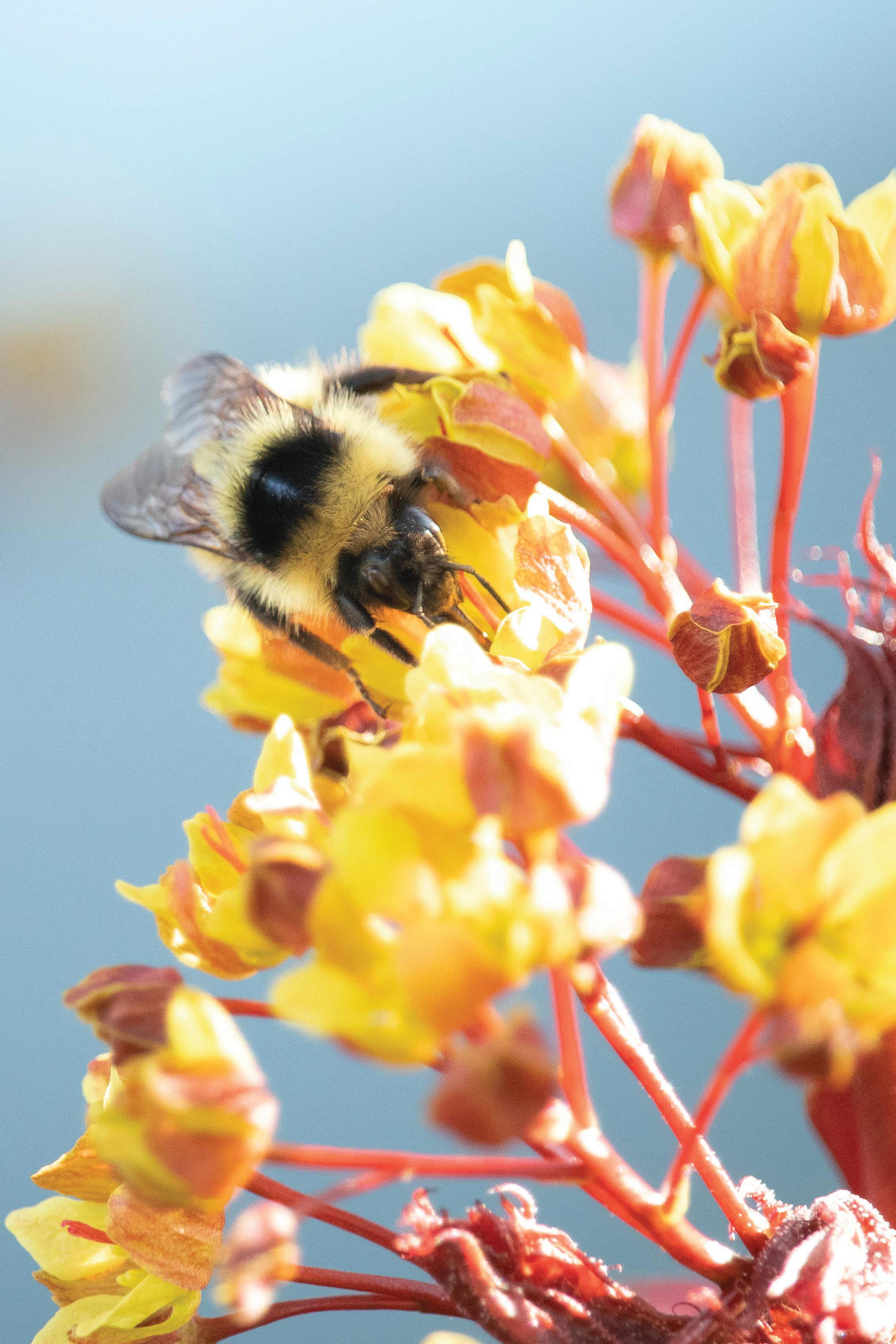




Though challenged by some members of the current mayor’s administration, sponsors of the ordinance cite a lack of efficacy and infringement of privacy as some of the reasons for the ban.
By Taylor Heckart new3@thenorthernlight.org
In a 10-1 vote the Anchorage Assembly approved an ordinance on April 18 that would ban the Anchorage municipality from using, acquiring or accessing facial recognition technology. The proposal’s sponsor was former assembly member, and UAA alum, Joey Sweet. The proposal was cosponsored by assembly members Felix Rivera and Daniel Volland.
Sweet was elected to represent District 5, filling Forrest Dunbar’s seat, which was vacated in January. In an interview with the Northern Light, Sweet said that he knew that there was only so much that could be done in his
106 days on the Assembly.
“So because of that, I knew that whatever I tried to get done … it had to be really simple and it had to be doable,” said Sweet.
Sweet said that facial recognition technology was the focus of his Masters in Public Administration capstone at UAA. He said that after studying facial recognition technol-
ogy for a year and a half – though he wouldn’t consider himself an expert –he was aware of how facial recognition worked in addition to what kind of legislation was appearing across the US.
According to Reuters, between 2019 and 2021 about two dozen state and local governments have passed laws that restrict
facial recognition technology. The federal government currently has no laws around facial recognition technology, leaving it up to state and local governments to regulate. The state of Alaska also currently has no laws around facial recognition technology.
The annual UAA Bill MacKay Athlete of the Year award – dedicated to former college athlete and UAA partner Bill MacKay – is given to the most impressive Seawolf athlete.
By Avery Williamson sports2@thenorthernlight.org
Eve Stephens has a momentous resume. In her four years at UAA, she’s been a seven-time Great Northwest Athletic Conference Player of the Year – winning this year’s award unanimously – and a two-time American Volleyball Association Coaches Player of the Week.
This year marked Stephen’s senior volleyball season, and she became the first player in UAA program history to receive
the Ron Lenz Division II Conference Commissioners Associate National Player of the Year. This season, she was also named the National Player of the Week, NCAA Division II West Region Player of the Year and she was a First Team All-American.
Stephens led the Seawolves to a 27-3 record and helped the team secure a GNAC title. She ranked second nationally with 5.78 points per set and third with 4.75 kills per set. Stephens also led the GNAC in kills and points per set.
The senior also set nine school records this season. She concluded her season as the GNAC and UAA all-time leader in points (2,292.5) and kills (1,926).
Stephens is placed in UAA’s top-five career lists for points for set (ranking first at 4.69), kills per set (ranking second at 3.94), attack percentage (ranking fifth at 0.296), aces (ranking third at 152), block assists (ranking third at 361), sets played (ranking fourth at 489), matches played (ranking fourth at 132) and victories (ranking fifth at 99).
Stephens also left a leg-
acy off the court, becoming a College Sports Communicators First Team Academic All-American and graduating with a 3.89 cumulative GPA.
While the UAA volleyball program will miss Stephens greatly, the honor of having such an influential player, teammate and role model as a Seawolf will never fade.
As Stephens noted in her speech after receiving the UAA MacKay Athlete of the Year award, “once a Seawolf, always a Seawolf.”
A deal was struck at the 11th hour after Democrats and Republicans sparred over the terms of raising the nation’s debt ceiling.
By Kyle Ivacic news2@thenorthernlight.org
Debate has concluded over the country’s debt ceiling as the nation’s two major parties came to an agreement over raising the amount of debt that the U.S. can take on – culminating with the president’s approval on June 3. Lawmakers had until June 5 to strike the deal and get it pushed through both houses of Congress.
The debt ceiling controls the amount of debt the U.S. is allowed to take on to pay its bills. Before these talks, it was capped at $31.4 trillion.
Legislators had to increase that limit because it was eclipsed in January. Since then the U.S. Treasury Department was “stretching” the nation’s finances by moving money around, but they would not have been able to continue doing so if its coffers had been allowed to run dry.
Bonds – which are given out by the U.S. Treasury – are a form of government debt that provide bondholders with interest over a designated period in exchange for the government being able to use bondholders’ money over the term of the bond. This process of incurring and repaying debt is what allows the Treasury Department to pay the government’s bills when tax revenue is not enough to do so. The amount of bonds put on the market is dependent on the debt ceiling.
U.S. debt is seen as a safe investment because the nation has never defaulted on it and has always made good on repaying debts – both the principal and interest. Many feared that this would change if the U.S. didn’t raise or suspend the debt ceiling.
Fitch is one of the largest credit reporting agencies in the nation. They announced on May 24 that the U.S.’s Triple-A credit rating is at risk of being lowered
because of the “political brinkmanship” and “governance challenges” in the United States that led to the passage of the debt ceiling deal with only two days to spare.
In the deal negotiated by party leaders on both sides, Republicans received many conces-

sions from Democrats, including the recouping of unspent Covid-19 funds and permitting reform that will make energy projects such as gas pipelines and EV charging stations easier to build.
To further appease Republicans, lawmakers in the Democratic party agreed to take back $21.8 billion from the $80 billion allotted to the IRS in the Inflation Reduction Act. This money will be alloted to other federal programs.
Democrats also agreed to implement new work requirements
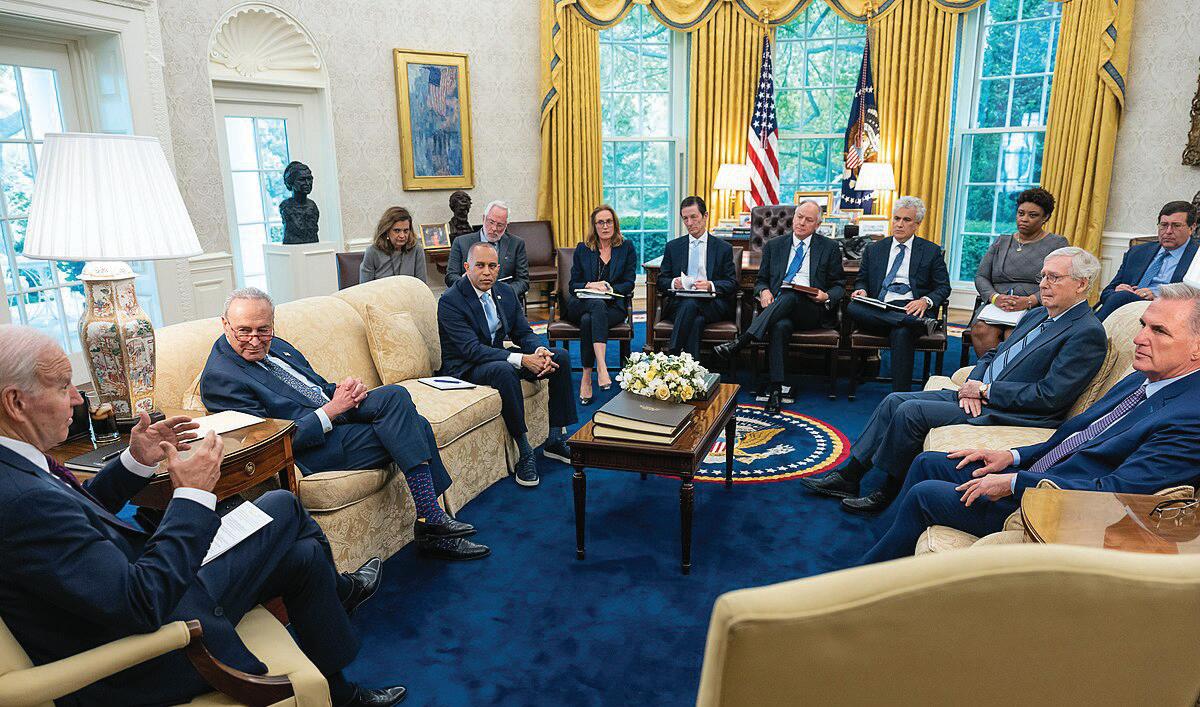
for federal food assistance programs.
In a televised speech on June 2, President Biden explained that the deal protects money going toward healthcare and other services for veterans and the elderly as well as maintaining the infrastructure funding that was secured with the 2021 Bipartisan Infrastructure Law.
The deal’s passage allowed for the U.S. to avoid an economic catastrophe. According to a report from Moody’s – a leading U.S. financial analytics firm – a default could have caused a “deep recession” and the loss of up to 7.8 million American jobs.
Similar debt ceiling negotiations have brought lawmakers down to the wire in the past. In 2011, a last-second deal on the debt ceiling hurt confidence in the nation’s ability to make good on its debts – causing Standard and Poors – another major credit reporting agency – to downgrade the U.S.’s credit rating for the first time in history.
The nation’s credit score eventually rebounded, but it is not set-in-stone, and lawmakers must continue to work together to ensure that the score remains Triple-A.
Campus Kickoff will be moving to a new location for its 20th anniversary this year.
By Matthew Schmitz editor@thenorthernlight.org
UAA’s student government body, USUAA, held one of their regular summer meetings on May 31 in the Student Life and Leadership conference room.
The meeting was being conducted hybrid in person and online, with Vice President Helena Ballard and Senator Yuki Mustang showing up in person and others attending via Zoom.
At the meeting, dates were set for when USUAA would conduct their Adopt-A-Road cleaning duties. USUAA is responsible for the section of 36th Avenue between Lake Otis Parkway and New Seward Highway. As a part of their Adopt-A-Road requirements, they have to spend at least three days a year helping to keep it clean.
Sweet’s ordinance stops the municipality from acquiring or using facial recognition technology, but it’s not a total ban.
Municipal departments that want to use facial recognition technology have to submit a request to the assembly. The assembly can then approve this exception for up to 90 days. After that time they must provide a report on how they used the technology, and can request that the assembly make the exception permanent.
In addition, the mayor’s office is required to put together a publicly available yearly report which details how facial recognition technology and unmanned aircraft systems were used, why and any changes to policy.
The annual report must also include a “detailed log of every unauthorized receipt, access, or use of Facial Recognition Technology or information derived from Facial Recognition Technology” in addition to how that access occurred and what steps were taken after.
Sweet said that what he likes about the policy is that it’s nonpartisan – people who support these kinds of bans exist in both political parties.
“The people who support facial recognition bans are either extreme far left liberals who are concerned about law enforcement and disproportionate impacts against communities of color,” said Sweet, “and extremely far right MAGA Republicans who don’t trust law enforcement, big government for the surveillance state, and so I thought from a political standpoint, it would be relatively straightforward.”
Though the ban passed almost unanimously through the assembly, the path toward becoming legislation was not without opponents.
The Bronson administration submitted their own “S” version of the ordinance for consideration with significant changes.
Original language that described facial recognition technology as “unknown” and that it lends itself to “potential abuse of manipulation” was removed.
Instead, the S version described facial recognition technology as “an effective tool for law enforcement,” and “a remarkable development that helps law enforcement exonerate the innocent, narrow searches for the guilty, and otherwise maximize limited resources…”
In the proposed S version, earlier language that described how “Facial Recognition Technology disproportionately misidentifies people of color most frequently of all demographics,” was entirely removed.
The S version also created a perma-
The assembly selected June 14, July 26 and Aug. 23 from 2 to 3:30 p.m. to fulfill their duties. These dates follow their regularly planned meetings at 1 p.m. on those days.
In the executive report, Hellena Ballard gave an update on executive activities and said that she and USUAA President Shanone Tejada have been meeting and introducing themselves to some faculty.
USUAA administrative advisor and director of Student Life and Leadership, Zac Clark, gave an update of some activities happening around campus and upcoming events.
He said that the free weekly Wild Scoops ice cream for members of the UAA community has been successful, with more than 100 ice creams being handed out each day so far.
Hosted by Student Activities, there
nent exception for the Anchorage Police Department to use facial recognition technology.
The proposed S version was not passed, and the Assembly instead passed a modified “S-1” version that was supported by the original sponsors.
In the Assembly’s second work session for the proposed facial recognition ban, Anchorage Chief of Police Michael Kerle spoke to some of the benefits of facial recognition technology when it comes to law enforcement.
“There are so many countless opportunities where facial recognition is helpful,” said Kerle. He said that police can use facial recognition during active investigations, cold cases, combating identity fraud, finding missing children, identify victims of child pornography, identify and rescue victims of trafficking, and exonerate the innocent, among other uses.
“Eyewitness identification and criminal investigations are notorious for being wrong, and the wrong people go to jail,” said Kerle, “Using facial recognition, … it’s more accurate to identify candidates of interest where the human eye is wrong.”
Sweet said that his biggest concern about the use of facial recognition technology was within a law enforcement context.
“The basic problem with facial recognition technology is that it isn’t as accurate when it’s used on the basis of people of color. These are systems that are designed in Silicon Valley by a disproportionate number of white men,” said Sweet, “They’re not intentionally creating these racist systems, but it’s an after effect, or result of a lack of diversity.”
Sweet also noted the instances when law enforcement agencies have been sued after using facial recognition technology in cases which proved to be false matches.
“It’s a pretty cut and dry case of government ineptitude resulting in a lawsuit,” said Sweet, “and I just wanted us to avoid that ever happening here.”
In 2021, the US Government Accountability Office reported that 41 federal agencies that employ law enforcement officers use facial recognition technology. According to a 2022 Pew Research Survey 46% of Americans believe that widespread use of facial recognition technology by police would be a good idea. 27% thought it would be a bad idea, and 27% were unsure. In that same survey, 57% said that widespread use of facial recognition technology will not change crime rates.
In the April 11 general assembly meeting, two members of the community came forward to testify in support of the facial recognition ban. Community members cited a desire to protect their right to privacy and minimize potential harm.
will be free ice cream handed out throughout the summer each Wednesday. So far it’s been in the Student Union Plaza, but in June it will move to the Cudy Quad and in July to the Consortium Library Plaza, near the South entrance.
Clark said that even students who aren’t taking summer classes have shown up to take advantage of the free ice cream.
Also, Clark shared some information about Juneteenth and Pride events happening on campus and in Anchorage in June. He said that UAA will have a table set up at the Juneteenth and Pride events happening in downtown Anchorage on the 17th, 18th and 19th.
Looking forward to next semester, Clark said that UAA will start using a new service for allowing students to interact with student organizations. UAA has been using a system called Engage that will be replaced with a new system
called Campus Groups, said Clark.
Finally, Clark gave a presentation about UAA’s Campus Kickoff 2023, which will be taking place on Aug. 26. For the first time, the yearly tradition will be taking place in the South Parking Lot between the Student Union and the Engineering and Industry building. Normally, it takes place in the Cuddy Quad, but Clark cited accessibility and ease of movement for participants as reasons for the move this year. This will be the 20th anniversary of the event.
Clark said that the website for student orgs to register for space at Campus Kickoff was ready, and organizations could start to sign up. August 16 is the deadline for registration.
The meeting ended with USUAA brainstorming ideas for what they should be doing at Campus Kickoff this year.
The next USUAA meeting will be held on June 28 and is open to the public. People can attend either by showing up to the Lyla Richards Conference Room in the Student Union or by watching via Zoom. Details and recording of previous meetings can be found on USUAA’s facebook page.

UAA students will be treated to free Wild Scoops all summer long.
By Kyle Ivacic news2@thenorthernlight.org
Seawolves on campus this summer can find a sweet reprieve from the heat in the form of Wild Scoops ice cream provided by UAA Student Activities. Students can enjoy the delicious, handcrafted ice cream every Wednesday at noon from May to July. The location will vary each month, with the Student Union Plaza hosting in May, Cuddy Quad in June and the Consortium Library in July.
“It was good!” said admissions counselor Casey Karn. “They had four or five different options. I got the Yukon Gold.”
Event coordinator Matt Burgoon was especially excited about the ice cream. “The ice cream was good. When I came to work today … I had some of that fudge toffee [ice cream] and I forgot everything that I planned to do.”
Others appeared excited as well and a short line formed at this first free ice cream event of the year. Students were treated to small servings of ice cream neatly packaged in to-go containers.
The weeks to come will likely see more students line up to get a taste of the free and flavorful ice cream. Stay up to date with events put on by Student Activities by following them across their social media accounts.
The conveniently located exchange will help students find textbooks at no cost.
By Kyle Ivacic news2@thenorthernlight.org
UAA students on a budget have a new option for finding low-cost textbooks from the recently opened Textbook Exchange in the UAA Learning Commons. Located in Sally Monserud Hall, the Learning Commons is accessible to students between 8 a.m. and 5 p.m. Mondays through Fridays.
Students can take books they need from the Textbook Exchange at no cost. Books up for the taking can be found on the bookshelf next to the large world map in the main room of the Learning Commons.
The Textbook Exchange is the product of efforts by the Student Textbook Affordability Club and UAA’s student government to help lower costs for students. Student Textbook Affordability Club president Emily Cohen wrote in an email to TNL that “The idea for a textbook exchange came about from a variety of club
members over the past couple years; multiple people had great visions of students sharing and reusing course materials.”
In her email, Cohen credited Katie Scoggin and Shanone Tejada of USUAA with helping the club “overcome the bureaucratic barriers to setting up a physical space for the exchange” and that “collaborating across clubs and organizations on campus is the key!”
The club is taking the summer off but will be back to work come the fall semester – starting with a booth at Campus Kickoff in August.
When the coming school year is in full swing, the club plans to hold regular meetings, fundraising activities and book drives — as well as work on creating textbook scholarships for UAA students. Students interested in joining the Student Textbook Affordability Club can find more information on the UAA Life website or by email at uaa.stac@alaska. edu. Students can check for updates from the club via the UAA Life website or can request access to its Discord server by email.
With inflation going ever-higher, Tamar Adler presents ways to use what you have and throw nothing out.
By Kaycee Davis features2@thenorthernlight.org
“The Everlasting Meal Cookbook Leftovers A-Z” Tamar Adler. 2023. New York, NY. Schribner. [ISBN: 1476799660. 537 pages including index. US $35.00. (hardcover.)]
In my kitchen, nothing ever goes to waste. If we have pasta for dinner, I save the water to poach eggs the next day. If I saute vegetables and have a few tablespoons left, instead of eating them or throwing them away, I use them the next day on top of something for lunch or dinner. A used up bottle of salad dressing gets the treatment of a little pickle juice,water or wine, complimentary herbs and it lives its best life on noodles or ramen.
It turns out that what I thought was pathological frugality on my part is actually uptown. For Mother’s Day this year, I was presented with a copy of “The Everlasting Meal Cookbook Leftovers A-Z’’ by Tamar Adler. And it’s everything I have done plus a lot more, all neatly bound in a 6.13 x 1.7 x 9.13 inches book.
In her introduction, Adler begins by explaining that her passion is the leftovers: those dregs of food that were not eaten and had been a part of something better, which often go to waste. Her intention is to show readers the potential in leftover food, even with small amounts so that you are beginning your next meal with the one you just finished.
Her introduction sets the mood for her book with her sensual descriptions. She writes about engaging the senses, how she listens “for eggs clattering around in a pot, and water burning off sauteing greens when they go from a light hiccup to a hard fry” and explains that the sounds work as well as a timer. She writes about how smell can help a cook figure out if something is good, without having to know the expiration date.
She acknowledges that sometimes she might seem “eccentric” adding “how many suggestions does one really need for leftover aillade?”
The reader gets to choose from what they have, she just provides the recipes and ideas. By recipes, she clarifies that she gives specifics, but these are leftovers, so the reader can make adjustments accordingly.
Adler’s website describes her as a “former professional cook. She is an author, a podcaster, a contributing editor at Vogue Magazine, and a mother.”
Is she more cook or more writer? My opinion is that she is equally and abundantly gifted in both.
The book is laid out in chapters starting off with an introduction and conversions, and then goes into chapters starting with “How to Eat Well” for vegetables, progressing through different categories of food (dairy and eggs, seafood, meat and tofu, soups, etc) up to “How to take Your Medicine” (sweets) and “How to give Thanks” (empty containers) There are plenty of literary and artistic nods, as
every chapter starts with an illustration by Caitlin Winner and a literary quote from various sources that pertains to the topic at hand.
Any cook might be overwhelmed by all the tips, ideas and lifehacks, but take it step by step. The index of “The Everlasting Meal” could be the most used part of the book because it is so easy to have something on hand, look it up in the index, and find your inspiration.
My favorite recipe so far is her idea of making “Eggs Benedict Spaghetti’’ with leftover (you guessed it) Eggs Benedict. The pasta water can be added to the hollandaise and is also used to warm any leftover eggs. My personal tip is that if you don’t have enough eggs already poached, this moment, after the pasta is removed,
is also a good time to poach fresh eggs.
The book is part cookbook and part philosophy of cooking and living. While one can tell that Adler’s palate is high end, this doesn’t make her leftovers seem “better than anybody else’s.” She is sharing possibilities with her readers of all pantries.
I like anticipating the next day’s meal as I am cleaning up the kitchen after dinner. The only problem with the book is that my copy is hardcover, which is hard to keep flat.
In these times of inflation, the ideas in this book will be used. “The Everlasting Meal” deserves space on every kitchen shelf.

“We cannot fully achieve social justice, equity, diversity, and inclusion without strengthening our sense of community.”
By Taylor Heckart new3@thenorthernlight.org
A handful of students gathered around the Student Union with their free Wild Scoops ice cream in hand to participate in Multicultural Student Services’ first campus-wide JEDI Adventure: an “Ice Cream ‘N Lake Stroll” around goose lake on March 31.
JEDI Adventures are an opportunity for individuals with marginalized identities to ex-
plore different interests in spaces where they are often underrepresented, said Multicultural Student Services Engagement and Belonging Coordinator Quacyya Cuaresma.
She said in the coming months students can look forward to a diverse offering of JEDI Adventures: bike rides, hikes, First Fridays at the museum, arts and crafts, and more.
JEDI is not a reference to a certain movie franchise. Instead, it stands for social justice, equity, diversity, and inclusion
— a kind of programming that Cuaresma has been working hard to bring to campus.
JEDI Adventures is a part of the JEDI Leadership Program. Cuaresma said the program also includes Jedi Leaders — paid student staff who assist UAA’s New Student Orientation and Multicultural Student Services — and the Jedi Alliance, a “group of student advocates and leaders committed to the advancement of JEDI at UAA.”
“JEDI Adventures is meant to increase access and break down
those barriers that a lot of different marginalized people face when they want to explore different hobbies and interests,” said Cuaresma.
She said that there is a long list of reasons why people with marginalized identities may be underrepresented, including a lack of access, finances, and a lack of people who can help them explore potential hobbies.
“A big part of the JEDI Alliance and JEDI Adventures is to center connection and play in our work. We cannot fully achieve social justice, equity, diversity, and inclusion without strengthening our sense of community … and we do that through connection and play,” said Cuaresma, “Not everything is so serious all the time. A lot of the things we do in college and after we graduate is geared to -
A program in UAA’s center for Human Development brings people together to learn and solve problems.
By Kaycee Davis features2@thenorthernlight.org
Project ECHO’s motto is, “Moving Knowledge, Not People.” ECHO, Extension for Community Healthcare Outcomes, is a program which is part of the UAA Center for Human Development. Project ECHO creates online learning communities for “educators, service providers, case managers, administrators, families, and others” so they can collaborate and discuss what is pertinent to the needs of their clients.
The ECHO discussions featured on the UAA calendars always looked interesting, so I attended several via Zoom to see what they were about.
Some of them were aimed at professionals within their respective fields, and some were aimed at both professionals and the clients they served.
I found that signing up online was easy. Some of the topics, such as the Alaska Vaccine ECHO, offered free learning credits for pharmacists, CME,
nurses and foster parents.
The Mental Health & Developmental Disabilities ECHO specifically reaches out to UAA students in related disciplines as well as professionals such as social workers and disability providers.
The sessions that reached out to clients were very good at sharing information. With those who had the conditions under discussion and/or their relatives, the professionals were good at listening and addressing concerns. The questions were usually general, and the professionals were not giving specific medical advice.
The ECHO website explains
that ECHO creates a “hub and spoke” learning loop where the “community participants learn from specialists, community participants learn from each other, [and] specialists learn from community participants as best practices emerge.”
From my perch as an observer, I could see that the learning loop was happening. Sometimes participants were quiet and not talkative or chatty, but in some I saw camaraderie developing between guests who had the conditions being discussed. When there was open discussion, they sometimes addressed each other, which I felt was a big deal especially for people who said
wards professionalism and being productive in society and being so serious all the time. In reality, it’s connection, meaningful relationships, and play that really ground us and give us a sense of belonging and community.”
She said that during the summer, each month will have one “active” adventure, such as outdoor-focused events, and one “relaxed” adventure. Cuaresma said that the goal is to make these adventures accessible to everyone.
“The word ‘adventure’ can seem like this very intimidating thing, but it doesn’t have to be. Art and music and creativity is also an adventure.”
Information about future JEDI programming, including JEDI Adventures, can be found at Multicultural Student Services’ Instagram, @uaa.mss.
they did not get out much. The interaction between professionals was friendly and it didn’t feel like a dry meeting.
After each session, there was a box folder to access the slides and videos, so participants could just participate in the presentation without having to write information down.
I reached out to Karen Heath, Co-Director of the Center for Human Development of which ECHO is a part. I asked if the ECHOs will continue and she wrote back stating that some will and that they are in the process of developing proposals for the coming year.
There are eight more sessions coming up in June to finish out the 2022-2023 fiscal year. Keep an eye on the UAA calendar for more.
Turkish Delight restaurant is under new ownership, bringing a fresh presentation inspired by centuries-old cuisine.
By Kaycee Davis features2@thenorthernlight.org
With Mother’s Day behind us and Father’s Day in our near future, we are ready for summer clothes and lighter dinner fare. I am not big on fashion, but I like to eat and can help you find a great restaurant.
Local restaurant Turkish Delight, located at 2210 E Northern Lights, serves Turkish cuisine. They opened years before the pandemic, and recently changed hands.
While the old restaurant was heavy on the Turkish decor, the new Turkish Delight — still serving Turkish food — was purchased by siblings Zeynep and Engin Kilic and Zeynep’s husband Wayne Gould. The new decor is lighter, with glimpses of Turkey in pictures on the walls.
With a dedicated team of cooks and food servers, the place hums with a steady influx of customers coming in, getting seated, dining and leaving. When I called ahead to see if I needed reservations, they said no, but they do let people make them. I decided to make them and was glad I did, because not long after my family and I arrived, a large group of people showed up. Had we shown up a few minutes later without a res-
ervation, there would have been a wait: always make reservations if the restaurant allows it.
If I were to use one word to describe Turkish Delight’s food, it would be “textureful.” After you get taken in by the menu with its descriptions of foods inspired by millennia of influence at a major crossroad, you order the food and a time capsule is brought to you on a plate. You can feel and hear the history as much as you can smell, taste, and see it.
You don’t “dig in” to Turkish Delight meals; you scan them in the same manner you scan poetry. You look at your meal and inhale the aroma and notice the spice notes. You look for dipping sauces in small bowls, and notice if there are groupings of meats or vegetables and observe sprinkles of anything on top of them which beg to be tasted alone the first time. You cut into your entree and you feel that first bite – sometimes you hear it – as much as you taste it.
During my visit I ordered the iksander. The gyro meat tasted as if it had been soaked in the tomato sauce, but it was not overpowering. It was delicious and I wanted more. The portion was generous and I would take half home with me.
My dessert, the Künefe, got another one of my scannings for
texture, smells, sensations. At first I noticed the sprinkling of mastic, which is derived from, and looks like, pistachio on the top. I was surprised that it did not taste like pistachio but instead had a light citrus note, like orange.
I used a knife and fork to cut into the phyllo crust. There was
a satisfying crunch in the initial bite followed by smooth cheese. To my eyes, the phyllo resembled straw. It quickly cooled but the texture and flavor were not compromised.
I am not a huge fan of coffee, but Turkish Delight coffee is something special as it is thick and comes with a tiny square of Turkish Delight candy, which has a sweetness that counters the strong taste of the coffee.
My dinner companions, my
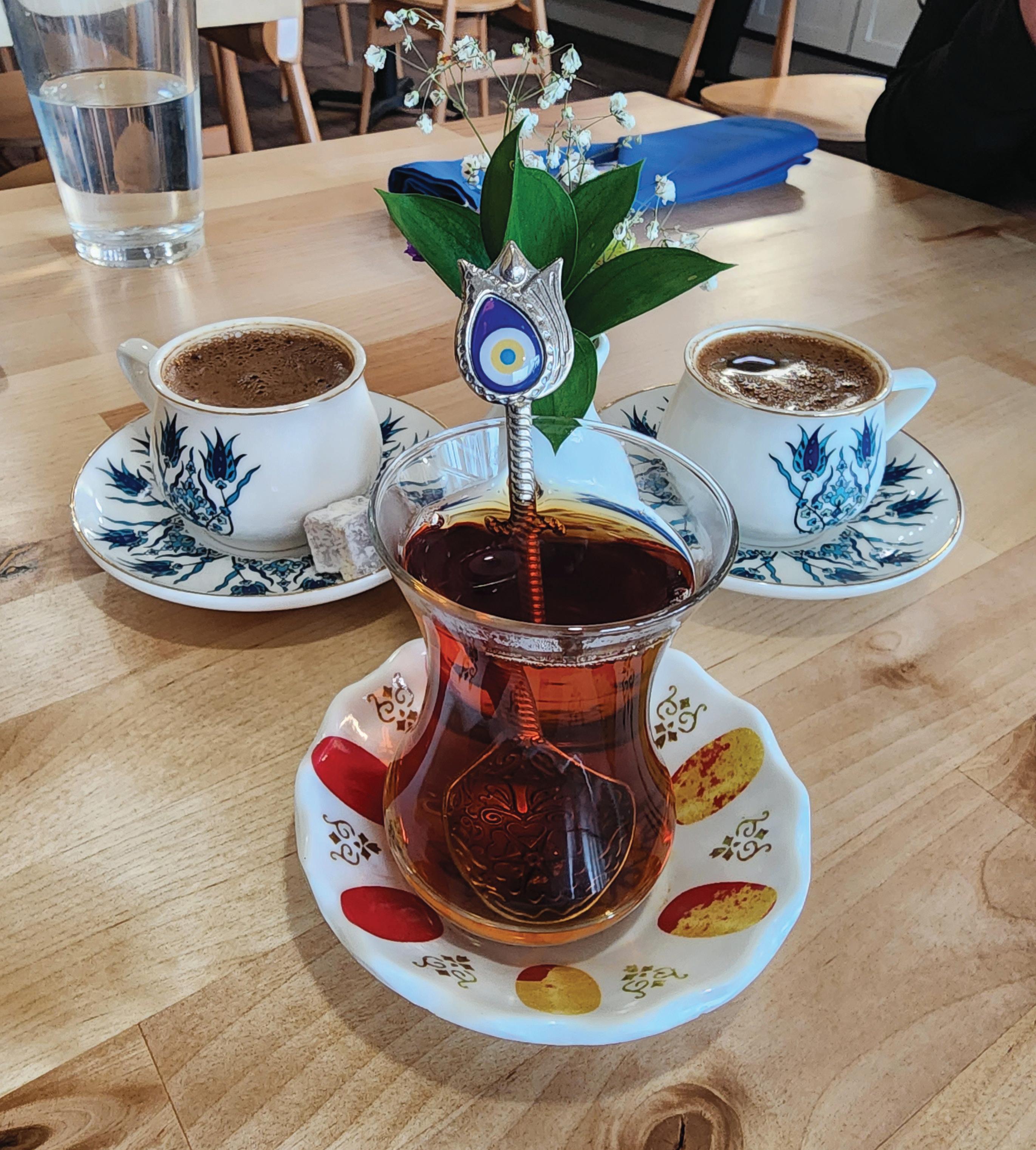
The Founder and CEO of the Arctic Guardian talks about the organization established in 2020 for law enforcement and military.
By Kate Alexandria Monahan features1@thenorthernlight.org
In 2020, James Drayton was inspired to help those in the uniformed service through tough times.
He hoped to build an organization through what he called a “grass-roots movement,” which would meet once a year for a competition between military and law enforcement and provide yearround support for these communities.
Thus was born Arctic Guardian, an organization that provides training opportunities to current and former members of the U.S. military, police forces and other government organizations.
Drayton has his own experience in the military. He served in the U.S. Army from 1985 to 1995, honorably discharged as a Staff Sergeant, Promotable.
Drayton said he served in times of war,
such as Desert Storm and the Panama Invasion. According to Arctic Guardian’s website, he was an “Active-Duty soldier serving in the 101st Airborne Division’s Long Range Surveillance Detachment.”
After his time in the military, he earned a degree in business administration, later on deciding to join the police force as a “Peace Officer for Merced County in California, serving on the Merced Area Gang and Narcotics Enforcement Team (MAGNET)”.
Through his experience in both fields — his degree and civilian work experience in business — Drayton was able to build a nonprofit organization for the purpose of helping those that he saw as needing training, equipment, and support not being fulfilled by their units or stations.
Drayton said that the “Defund the Police movement” was one of many reasons why he wanted to help military and law enforcement receive training outside of
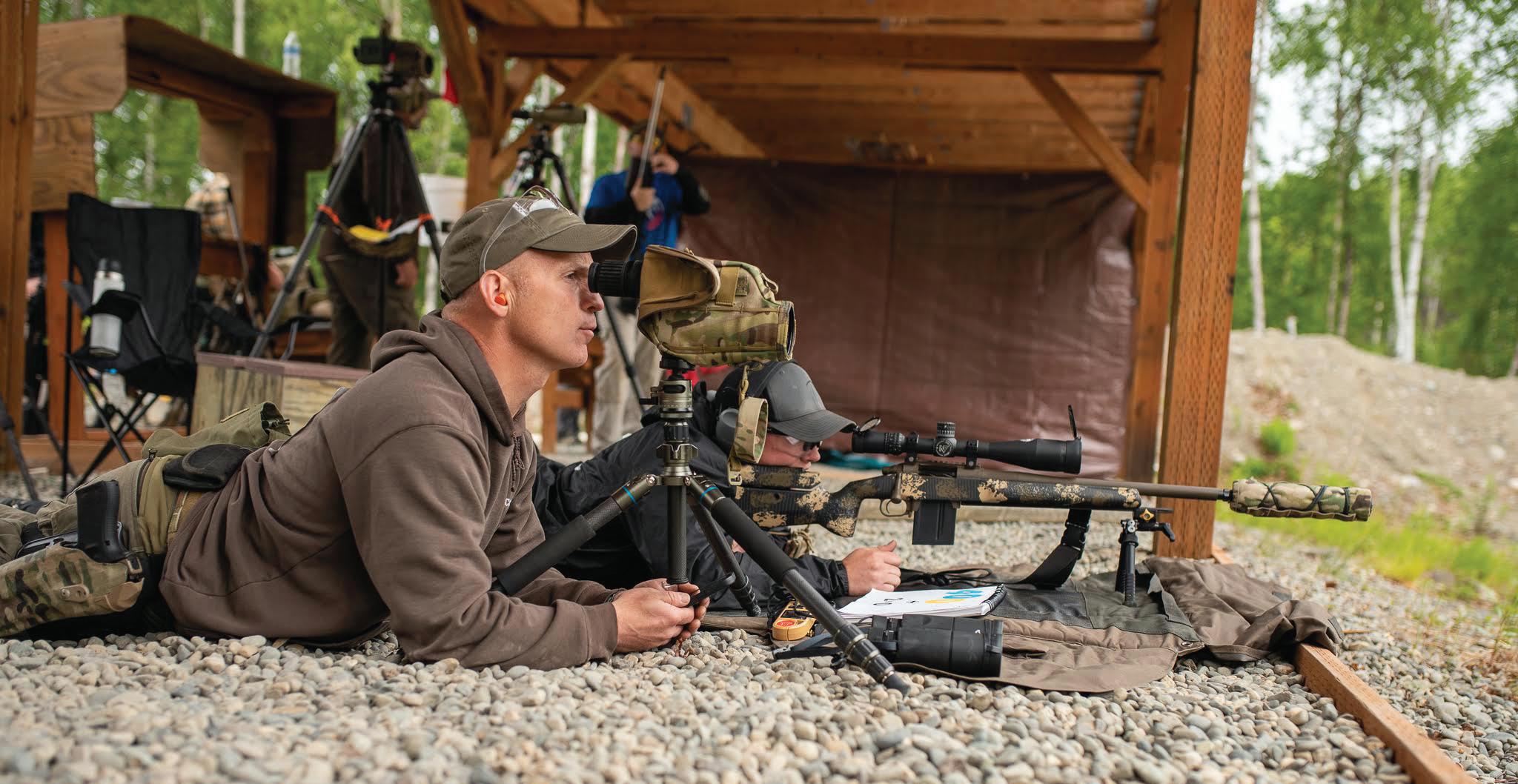
work. He believes that the key to a functioning unit and organization is only as good as the training provided to the “boots on the ground.”
In 2020, Arctic Guardian held its first major event with 13 teams from 11 units across law enforcement, military and other government agencies.
This year the competition will be held in Talkeetna, Alaska, on June 17. There will be an annual meeting, followed by focus groups and committee workshops that assist commanders and leaders with individual coaching for certain training topics.
Staff, instructors, and teachers alike are brought in from outside organizations to donate their time and supplies. Afterwards is the Marksmanship Competition.
As of May 1st, there are 62 competitors from various organizations, including Army, Air Force, Anchorage FBI, Anchorage Police, Alaska State Troopers, Honolulu FBI, and 501st Parachute Infantry Regiment
Following the competition there will be an award ceremony. Awards given to every competitor. Even those that may not rank highest still earn an award for their commitment and support of the organization.
Drayton said that, “the awards and trophy representation are a crucial time for the participants to socialize and network.”
This year, lunch and dinner will be provided free of charge from the Pizza Bear Paw Brewery and the Sheep Creek Lodge.
Arctic Guardian also offers other training opportunities. The organization was gifted with 16 slots to Hat Creek Training, a high-angle, long-range precision
husband and my daughter, enjoyed the visit as much as I did. Asked about the restaurant a few days later and what she liked best, my daughter said, “The menu with vegetarian foods.” While she had a meat dish, she has friends who are vegetarians.
My husband said he liked the variety on the menu, not just for dietary reasons, but for how it is arranged into categories and then into hot and cold. He knows a lot of people with dietary issues and the menu is presented with a code for gluten free, dairy free, and nut free. He likes that “the items with dietary codes are not special, but simply… food.”
I found the price to be average for Anchorage. Appetizers are around $15, and dinner is anywhere from $20 to $35, with some dishes being offered as a sandwich version for just $18. Dessert is no more than $11.
My experience with Turkish Delight was fantastic because it appealed to all my senses and then some. The restaurant has the personality of what I imagine to be a cafe in Turkey with its flow of people and food. It is eclectic without being over-thetop.
In an email with Zeynep, I found out that she plans a winter menu. So if there is something you want to try on the current menu, but you order something else, be sure to pay them another visit before winter comes.
rifle course in Riggins, Idaho next year; the 16 people chosen to attend this course were selected by a committee. Those who attend, will learn tactical training that generally would not be available to them in normal work circumstances.
From the Arctic Guardian Website, the organization works to ”support the uniformed services of Alaska by funding equipment and training that would otherwise be cut from the operational plan due to fiscal restraints …Once a need has been identified Arctic Guardian works diligently with civilians and companies across Alaska that want to ensure those who are called on in times of conflict and crisis; are well trained, equipped and supported.”
Drayton said the cost and time to create Arctic Guardians was immense. Primarily helping have been Drayton’s wife, Julie and their son, Atticus, who has been by his side from the beginning. Helping Drayton are the Arctic Guardian’s Board of Directors: Matt Deluca, the board president, James Lewis, Treasurer, and Rachael Kidwell, Secretary.
The organization made no money through the first few years, funded entirely by Drayton. He said that through the years, it grew as many people saw the opportunity to invest in the future of America’s leaders. To date, more than $100,000 has been donated to the organization and many individuals have given their resources, supplies, training and time.
The Arctic Guardian’s Mission Statement is “to proactively support those who we, as a society, rely on to be our best when the situation is at its worst.’’ Drayton’s goal for Arctic Guardian in years to come is to expand events in other states such as Texas, Midwest, and more, creating a nationwide movement of support towards Military and Law enforcement.
This event is not for civilians; Arctic Guardian is meant to be a haven for soldiers, and officers, to train on their own time to strengthen weaknesses in their training.
By Taylor Heckart new3@thenorthernlight.org
Now that summer is finally in full swing, students may be looking for ways to get outside and enjoy Alaska. For those interested in renting outdoor summer gear, UAA is offering canoes, lake kayaks, stand up paddleboards, hammocks, and spike balls.
One change that’s happening with rentals is that UAA will no longer be offering the option to rent camping gear such as backpacks or camping stoves, though they’re still currently listed online. Assistant Director of the Student Union Cody Buechner said it was too difficult to keep those items in good condition, as they could be challenging to clean.
Buechner said that reservations can be made at the info
desk on the second floor of the student union. The info desk is staffed between 10a.m. and 2 p.m. during the weekdays, but Buechner said that they’ll accept reservations through 5 p.m.
“You can call us on the phone. If we don’t have anyone up there we may not answer the phone because again, this is the staffing capacity, but they can come to the front desk and find somebody and rent it,” said Buechner.
Kayak rentals take longer to process, so Buechner recommends that people who want to rent kayaks come by no later than 4:30 p.m.
“The important thing for folks to know is that [the] kayaks they have to transport themselves. So we will show the supplies but you have to strap it to your own vehicle yourself,” said Buechner.
There’s currently no maximum limit to how much gear
By Alex Lim Contributing writer
Preacher’s Daughter by Ethel Cain, is an album that’s carefully paced to tell a full story of Americana and religion.
The second track, “American Teenager,” sets the stage for the rest of the album. The song is almost purely pop in a way, with built-up choruses and solid guitars and drums.
It almost tricks you into believing that the rest of the album would keep up this Americanapop genre.
The lyrics themselves act as a bit of a warning for those who continuously believe in the idea of the “American Dream,” and the dangers of patriotism.
The rest of the album isn’t as sunny as “American Teenager” is, with the album taking on a more melodramatic sound.
Heavy piano, deep bass, and an overall slower tone. Cain’s vocals show the raw emotion in all of the songs, with her voice echoing as though she was in a church.
The story behind the album
itself is nothing short of depressing, as it focuses on generational and religious trauma.
It tells Cain’s story of how she’s constantly haunted by her family’s strict religious rules while she struggles to live a life that’s more than just her small town in Alabama.
The songs are a constant up and down of Cain’s relationships, as well as her struggles with her past and her loneliness.
As Cain continues to meet different men, she becomes exploited, gaslighted, and gets tangled in drugs, which eventually leads to her brutal death in “Ptolemaea.”
“Ptolemaea” is incredibly haunting; full of demonic whispers and horrifying gurgling. It reached its peak when Cain lets out a horrifying scream. And her screams of horror continue as the bass and drums kick in.
I’d highly recommend Preacher’s Daughter to anyone who loves interesting lore and wants an album that will bring them on an emotional rollercoaster. Some personal favorites are, “House in Nebraska,” “Ptolemaea,” “Sun Bleached Flies,” and “Strangers.”

someone can rent at one time. Buechner said that as long as UAA has the inventory, they’re willing to rent it.
Prices can be found online under the Student Union’s outdoor gear rentals page. Pricing exists for day, weekend, or week rentals, though Buechner said
that people can rent for multiple weeks.
UAA also sometimes offers sales around certain holidays like the Fourth of July or spring break. When specials like that run, the Student Union will put out a notice in Green & Gold.
Buechner noted that these
gear rentals are not exclusive to UAA students– anyone in the community is welcome to rent gear at the same prices.
UAA currently has five lake kayaks, four canoes, and two inflatable paddle boards available for rent.
By Taylor Heckart new3@thenorthernlight.org
June is LGBTQ Pride Month! It’s celebrated each year in June to commemorate the Stonewall Uprising. In 1969 police raided the Stonewall Inn, a New York gay bar, which sparked six days of protests between police and LGBTQ activists. According to the Library of Congress, the Stonewall Uprising was seen as the beginning of the gay liberation movement in the United States.
Anchorage and the surrounding areas will be celebrating Pride all month long! Links to event pages with more information can be found on our website. Drag Storytime
June 10, 12-2 p.m.
Black Birch Books, Wasilla For those in Wasilla, Black Birch Books will be hosting an all-ages children’s book Drag Storytime. There is no cost, and according to their event description on Facebook, “Looking fabulous for the event is encouraged!”There is no cost,
and dressing up is encouraged. Sunshine and Sandwiches Pride Party
June 14, 4-6:30 p.m.
Student Union Plaza
For the third year running, the UAA students, staff, and faculty are invited to do a one mile walk around campus, eat free ice cream and sandwiches, and enjoy live music to celebrate Pride! ManLadyLadyMan will be performing, followed by a dance party with UAA’s college radio station KRUA!
5th Annual Pride Block Party
June 24, 12-7p.m.
Writer’s Block Bookstore and Cafe
This event is free, family friendly, and a collaboration between LGBTQ and BIPOC groups in Anchorage. Hosted by MoHagani Magnetek, there will be food from Writer’s Block, LGBTQ DJs, and booths selling LGBTQ and BIPOC-made items.
Celebrate Pride 2023
June 24 12-5p.m.
Anchorage Park Strip
Those looking to celebrate pride can also head downtown
to the Park Strip. Attendees can look forward to food, music, vendors, and drag performers! All money from the event will be donated to local LGBTQ nonprofits.
Chugach Mountain Bike Riders Pride Ride!
June 28, 6-8 p.m.
Mirror Lake
The Chugach Mountain Bike Riders will be hosting a community barbeque and bike ride to celebrate pride! This event is meant to be inclusive for bikers of all skill levels, and will have two routes of different lengths to choose from.
This event is free and family friendly, though you will be asked to sign a waiver before participating.
Pride Art 2023
June 30, 4-6 p.m.
UAA Pride Center
UAA is hosting an outdoor crafting event at the end of the month. This event is open to everyone in the community, and all food, snack, and art supplies will be provided. Registration is encouraged but not required.
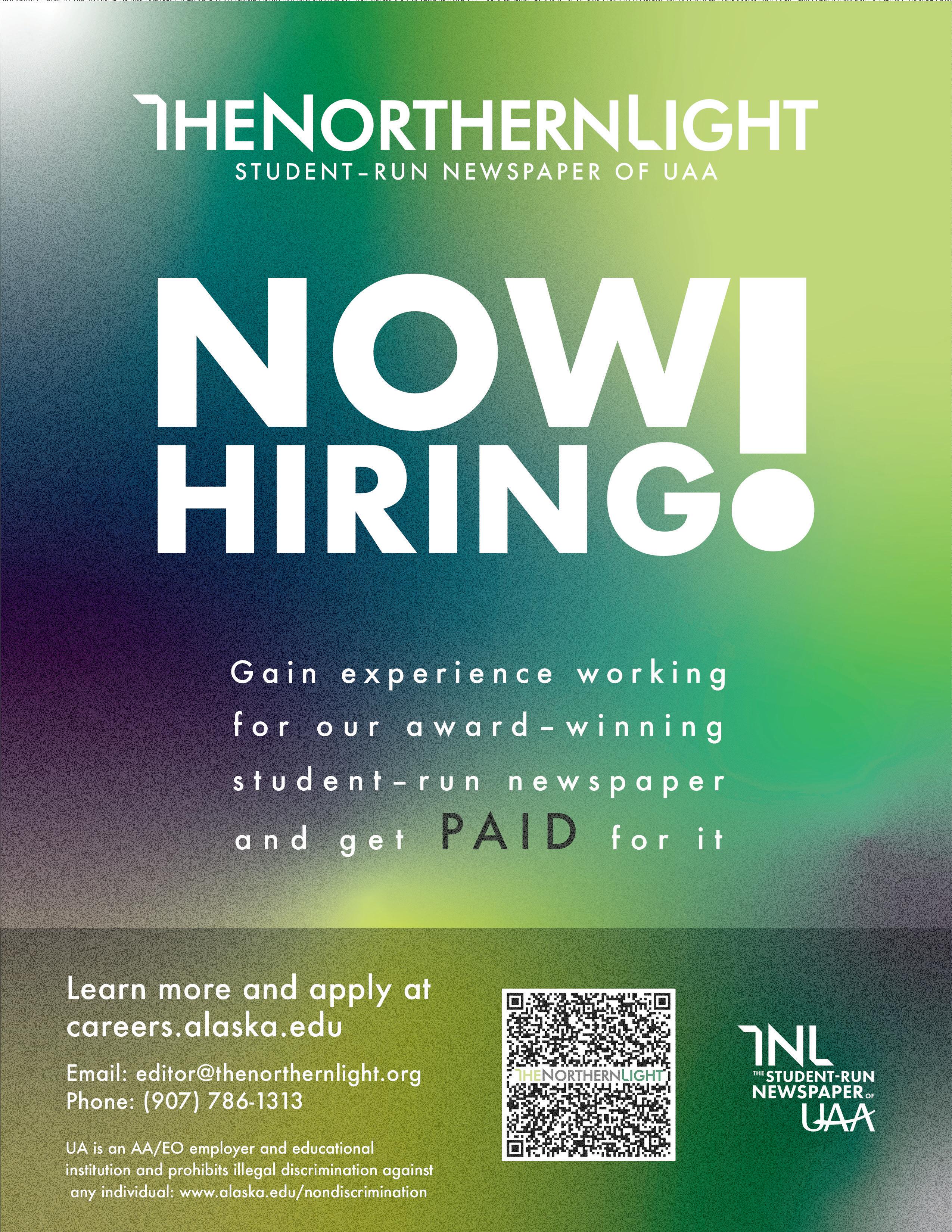
For the second year in a row, the monthly concert series brought live music and food to the Cuddy Quad.
By Matthew Schmitz editor@thenorthernlight.org
Members of the UAA community came out to the Cuddy Quad on Friday, May 19, to listen to live music and get a meal
during the first “Concert in the Quad” of the summer. UAA Special Events coordinated with Student Life and Leadership to bring musician Emma Hill and the Papaya Tree food truck to UAA. The concert
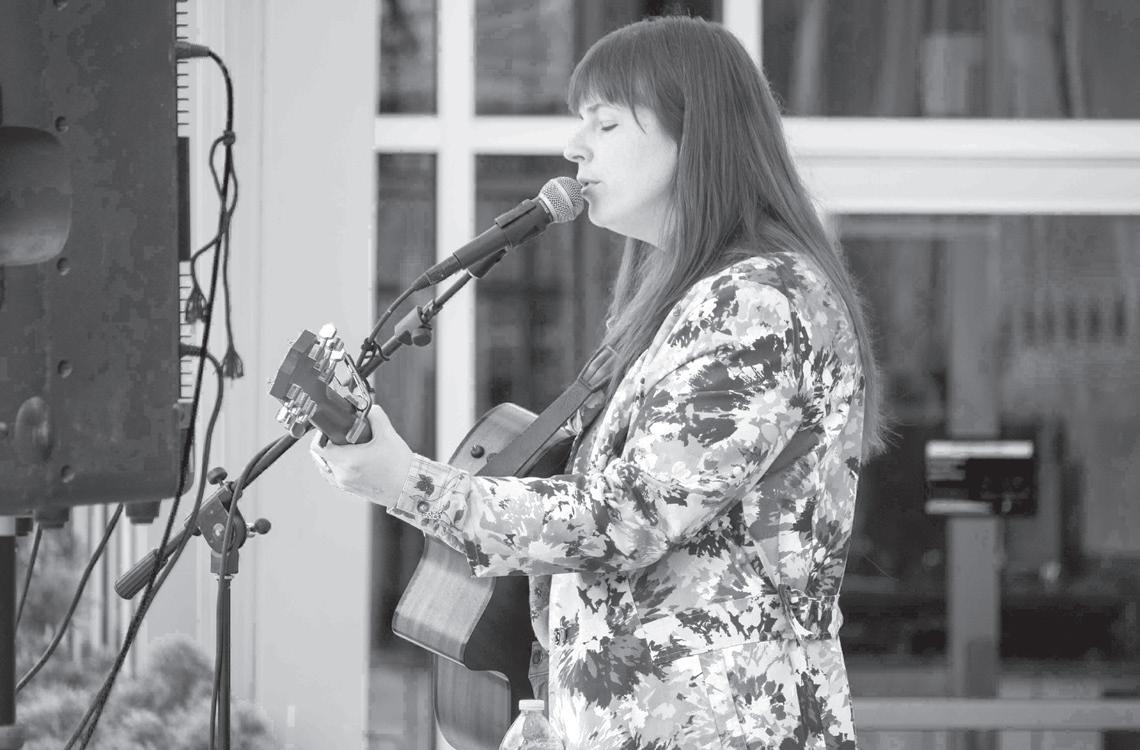
took place from 11:30 a.m. to 1 p.m.
The skies were overcast, and the clouds that threatened rain, but it never came.
On the north end of the quad, in front of Cuddy Hall, Hill performed a solo act to various members of the UAA community, who were eating at picnic tables set up in the quad for the event.
Around 50 people sat at the tables and listened to Hill play her guitar and sing. Her style of music is probably best described as folk.
Speaking with TNL, Hill said that she performed at the concert series last summer and that she has performed regularly at UAA over the past 12 years.
Hill is a musician based in Anchorage, originally from Alaska. Her recent project called “Park Songs” is available on bandcamp. According to its
description, “‘Park Songs’ is an interactive, multimedia project merging music, photography, and literature to fully immerse the viewer in my experience of and appreciation for US National Parks.”
The concert coincided with UAA’s Staff Appreciation Day. Staff were able to get a free hot dog with chips — grilled up by Associate Director of Student Life and Leadership Zac Clark — or a discounted meal from the Papaya Tree food truck.
Students were able to get a free hot dog with chips or a free meal from the food truck.
According to Papaya Tree’s website, they serve “unmessed with Southeast Asian street food.” Their menu includes Pad Thai, chicken and pork skewers, fried rice, rolls, tea and salad.
Molly Gray, special events manager for University Advancement, brought together various university organizations to help put on the show.
She said that facilities and maintenance were responsible
for setting up the picnic tables, providing trash cans and getting the grounds of the quad prepared for the event.
She said that this is the second year they’ve put on the summer concert series.
Gray said that the “Concert in the Quad” came about when Chancellor Sean Parnell said he wanted to do something on campus for students over the summer.
Normally, they get two food trucks to serve lunch at the concerts, she said. But with the event being on Friday — to align with Staff Appreciation Day — they could not find another truck that was not booked.
She said there will be two food trucks at the other two concerts planned this summer on June 27 and July 25, the fourth Tuesday of each month.
Details about the performances and food trucks will be released on the university calendar and by email as the dates approach.
In the last issue, the story “UAA’s Dance program takes a final bow” incorrectly said that Momentum Dance Collective recruited from Sunlight Collaboration. Momentum Dance Collective has existed before Sunlight Collaboration, and though they sometimes hold auditions, they do not recruit dancers and have never recruited anyone from Sunlight Collaboration.
3211 Providence Drive
Student Union 113 Anchorage, AK 99508
Executive Editor
Matthew Schmitz (907) 786-1313 editor@thenorthernlight.org
News Editor Taylor Heckart news3@thenorthernlight.org
Sports Editor Avery Williamson sports2@thenorthernlight.org
News Reporter Kyle Ivacic news2@thenorthernlight.org
Features Reporter
Kate Alexandria Monahan features1@thenorthernlight.org
News Reporter
Savannah Johansen news5@thenorthernlight.org
Features Reporter
Kellie Davis features2@thenorthernlight.org
Video Editor Eli Rupp video@thenorthernlight.org
Opinion Writer
Hannah Dillon opinion2@thenorthernlight.org
Rico Torres Copy Editor copy@thenorthernlight.org
Photographer Justin Cox photographer@thenorthernlight.org
Graphic Designer Tressa Wood graphics@thenorthernlight.org

The Northern Light is a proud member of the Associated Collegiate Press. The Northern Light is a weekly UAA publication funded by student fees and advertising sales. The editors and writers of The Northern Light are solely responsible for its contents. Circulation is 2,500. The University of Alaska Anchorage provides equal education and employment opportunities for all, regardless of race, color, religion, national origin, age, sex, Vietnam-era or disabled-veteran status, physical or mental disability, changes in marital status, pregnancy or parenthood. The views expressed in the opinion section do not necessarily reflect the views of UAA or the Northern Light.
The University of Alaska is an affirmative action/equal opportunity employer and educational institution. The University of Alaska does not discriminate on the basis of race, religion, color, national origin, citizenship, age, sex, physical or mental disability, status as a protected veteran, marital status, changes in marital status, pregnancy, childbirth or related medical conditions, parenthood, sexual orientation, gender identity, political affiliation or belief, genetic information, or other legally protected status. The University’s commitment to nondiscrimination, including against sex discrimination, applies to students, employees, and applicants for admission and employment. Contact information, applicable laws, and complaint procedures are included on UA’s statement of nondiscrimination available at www.alaska. edu/nondiscrimination.
Media Adviser Paola Banchero
Administrative Adviser Zac Clark
Fiscal Technician Micah Perino
The Northern Light is hiring! See our job listings at careers.alaska.edu.
The Northern Light encourages readers to express their views in the newspaper. The Northern Light reserves the right to reject or publish any submission, online or in print.
Letters to the editor can be submitted to editor@thenorthernlight.org. The maximum length for a letter to the editor is 250 words, and 150 words for letters specifically endorsing candidates for federal, local, or university office. A letter to the editor is written by someone who does not have authoritative knowledge on the subject they are discussing. Contributors are restricted to one published letter to the editor per month.
Opinion pieces can be submitted to editor@thenorthernlight.org. The maximum length for a contributor’s opinion piece is 450 words. Contributors are restricted to one published opinion piece per month. Opinion pieces written by staff of The Northern Light are limited to 800 words. An opinion piece that is published in The Northern Light should be written by someone who has authoritative knowledge on the subject they are discussing.
Letters and opinion pieces are subject to editing for grammar, accuracy, length and clarity. All letters and opinion pieces must include names, major and/or group affiliation and contact information for verification purposes. The Northern Light will not publish anonymous letters or pseudonyms. Requests for corrections can be sent to editor@thenorthernlight.org. Print publication is subject to accuracy and available space. All corrections are posted online with the original story at www. thenorthernlight.org. The deadline for submissions is the Friday before publication at noon, no exceptions.
The Northern Light newsroom is located on the first floor of the Student Union Room 118.
Proper and unburdened handicap accessibility should be mandatory and implemented into every building on campus. While costs can be steep, inclusion of diversity should always be a priority.
By Hannah Dillon opinion2@thenorthernlight.org
While walking through buildings on campus, I realized something odd about nearly every main entrance. Most have two sets of handicap accessible doors, but you have to push the “OPEN DOOR” button each time to go through each door.
To me, living without a disability, this “one door closes, while another opens” action is a simple hassle. But to someone living with a disability, these doors are only a small part in a variety of everyday occurrences.
In an interview with UAA professor Kimberly Pace, I asked a few questions regarding accessibility on campus. During our conversation, I soon realized the deeper issues embedded at UAA.
Pace is in an electric wheelchair. She said the challenges among different buildings on campus “have gotten much better, in terms of accessibility,” but I believe there is always room for acknowledgment and improvement.
The largest standing problem for Pace, and perhaps other UAA faculty and students, is classroom accessibility. Many UAA building entrance doors are handicap accessible with automated buttons, but few classrooms on campus have this same device.
The absence of this device makes it difficult for some individuals to access and leave the classroom. This creates a situation where an individual hopes that someone will eventually pass by and open the door.
If no one were to pass by, the affected person is simply stuck in or out of the classroom. In Pace’s many experiences of this situation, she says “Frequently, I can’t get out if the door closes, so I am stuck in the classroom. I’ve gotten really good at pounding on the door”.
When such a situation arises, Pace often has to call for UPD. She says “UPD is pretty responsive, so I appreciate that”.
Pace sighed deeply as she
told me that the Wendy Williamson auditorium is the “bane of my existence.” It’s a building she frequents as the model United Nations program director. The auditorium often holds up to 300 participants with little recognition of diverse bodies participating in events.
For those with disabilities, some buildings on campus, like Wendy Williamson, force these individuals to sit on the sidelines, near the door, or in the cold — inhibiting participation in events.
One of the most alarming topics brought up in my interview with Pace was the mention of a yellow whistle. Several years ago in the Social Science Building, where Pace’s office is located, there was a small fire in the building.
Elevators are shut down in a fire emergency, so Pace was unable to leave the 3rd floor of the building. She waited outside her office and, fortunately, a student passed her and assisted her in exiting the building, to which Pace was very grateful.
Pace met with administrators and faculty following the event to come up with ways to prevent such a life threatening situation from happening to anyone again.
It was “several years ago, several Deans ago,” said Pace.
“Their solution was to give me a yellow whistle that I was supposed to blow. So I carried that whistle with me for a long time. Only to realize that if I were to blow the yellow whistle, the exact same thing would happen.”
Whether it be door and room accessibility, emergency preparedness or overall quality of life enhancement, every institution should take into account and think of the diversity in life.
Without this acknowledgement, those living with disabilities may feel as though they are “the last person on the Titanic. Because it’s just complicated and difficult and challenging,” said Pace.
“If we are going to be an institution that embraces diversity
and inclusion and social equity, that includes accessibility. And it is critical that we bring all voices and bodies to the table, whatever that looks like.”
Throughout the interview, Pace often mentioned the appreciation she holds for the kindness of others and the importance of accessibility for other students and staff at UAA.
Pace said “I am very gracious for the kindness of strangers and for students and people that I know. By and large, people are very gracious. I appreciate that. But, it would be nice if they didn’t have to. But that’s just my story and there are so many other stories about other folks that have different types of challenges than I do, that’s just a little sliver”.
In my curiosity, I wanted to see if there was a solution to these accessibility obstacles. I thought UAA may have a plan in place to make campus more inclusive, then Pace told me about The UAA 2027 Strategic Plan.
Through further research, I found the Strategic Plan has five aspirations to improve campus quality through inclusion and equity of diversity. A couple of these aspirations, “We accelerate excellence through continuous improvement” and “We create a culture of equity and inclusion by embracing our diversity”, hold a promising future for UAA.
To address the strategic plan and budget concerns I spoke with UAA’s vice chancellor for facilities and campus services, Kimberly Mahoney.
When I asked Mahoney about gradual installation of individual handicap accessible doors, she said “We target additional ADA buttons based on complaints, so it’s maybe not the best way to address the issues but it does give us a window into where we should prioritize.”
Mahoney said, “We have so many deferred maintenance requirements that already need funding, it wouldn’t be responsible for us to put ADA on every door. You can’t just install an operator, you often have to in-
UAA offers meal plans for an exceptional price with abundant meals. While there are some contingencies with the variety of money spent, UAA excels in provision above those compared.
By Hannah Dillon opinion2@thenorthernlight.org
My monthly grocery expenses in Anchorage turns out to be roughly $450 a month to eat three meals a day. This does not include occasional take-out, snacks, events where I buy any type of food or the cost of cooking.
I was curious as to how much UAA charges students for meal plans during a semester. Initially, I saw the semester charge of $2,550 as a bit expensive. But when you break down the total cost per meal per week, you discover UAA’s meal plans are very cost efficient. For 16 weeks, anyone on the “Weekly Servings” meal plan will receive “18 All-You-Care-to-Eat Meals per Week and $320 Dining Dollars per Semester”.
If you break down the total cost of each “all-you-care-to-eat” meal, it equals $8.85 per meal. This example does not include other options available under the same plan, but they all are explained on the UAA Meal Plans webpage.
In the entirety of Alaska, from what I have experienced, it is rare to receive such a fair price on a meal, not to mention an already prepared, all-you-can-eat meal.
While meal plans at UAA are exceptional, students may only use the all-youcan-eat meal vouchers at Creekside Eatery.
The vouchers, unfortunately, can not be used at the various coffee shops or at one of the only dining areas on campus, Subway.
This restriction of these vouchers forc-
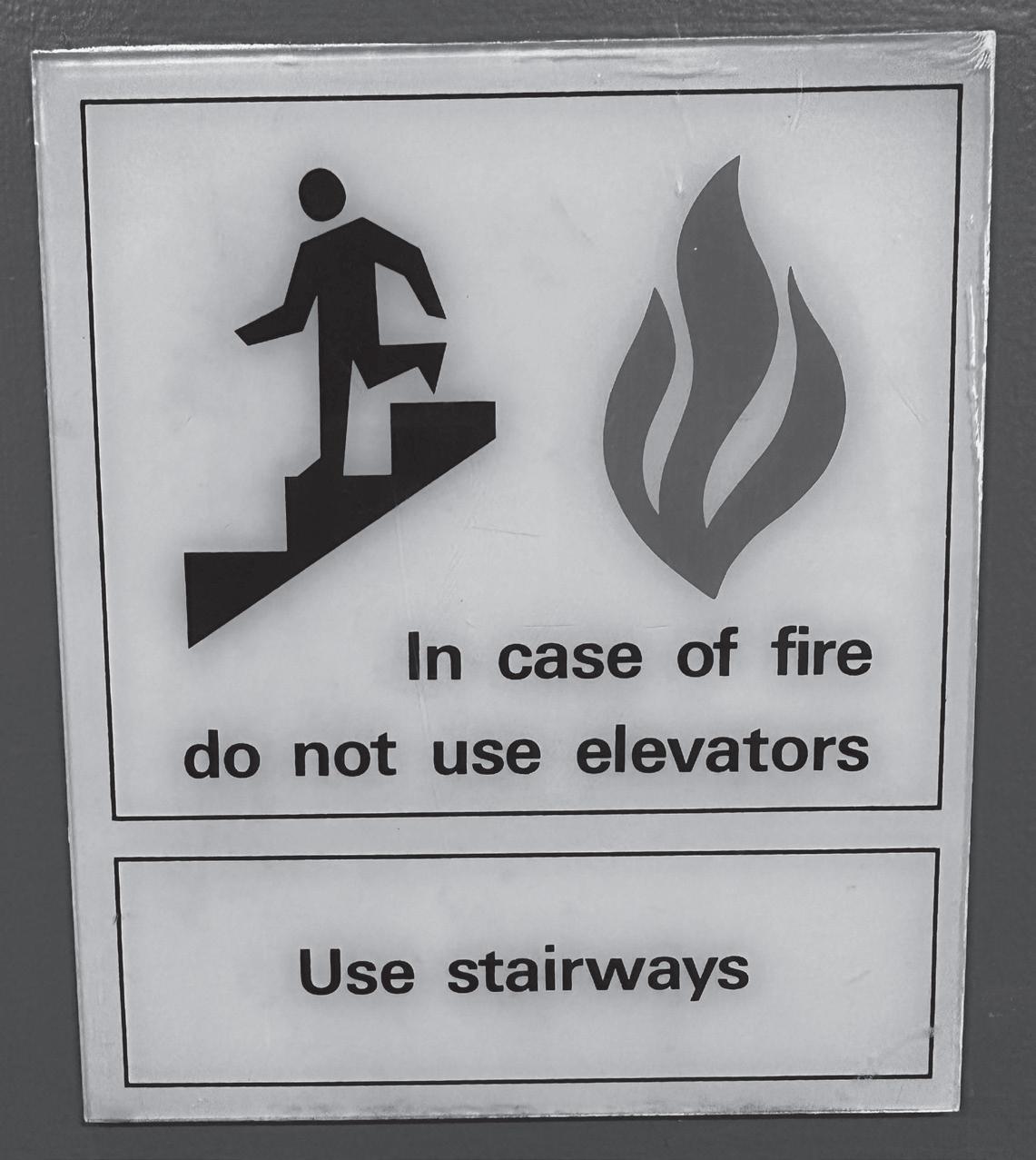
stall a new door and frame. And so it [can] be $20,000 a door.”
This financial restriction is unfortunate, but Mahoney has an obvious passion for easing the lives of those affected, saying “If we have somebody who can’t get to or through critical areas in order to visit their Dean, that’s a concern. And I would want to remove that barrier for anybody who experiences that kind of barrier.”
If you or anyone you know is experiencing any problems here on campus concerning what has been mentioned, please contact someone on campus to voice your concerns. Regarding evacuation strategies, Mahoney said, “Most public buildings are designed with an area refuge in the stairwell. The stairwells on campus actually have additional fire protection, to allow emergency personnel to arrive and rescue the people that are in the area of refuge.”
While this area of refuge is a safety net for those who are unable to exit a building in an emergency, I wish there were options other than to wait for help in a burning building.
In further curiosity, I contacted Statewide Door & Glass, a local door company who installs handicap doors, to get an estimate on the pricing for installation of handicap accessible doors and coinciding buttons.
es those who pay for so much food, to eat only at the UAA dining area, provided solely by Creekside Eatery, limiting students’ variety of dish options.
While I myself have not been to the cafeteria or have eaten UAA’s cafeteria food, I have heard good things about both the pricing of meal plans and the variety and taste of the food from other students, just from Creekside Eatery’s provisions.
Comparing the $1,800 that I strictly spend on buying groceries, as well as the time to prepare my meals, clean and pay monthly electricity bills, $2,550 for a semester-long meal plan looks pretty appetizing.
It may be cheaper to outright buy groceries and prepare all your meals for the week, but the cost of effort, time and skill sometimes outweigh the price for some college students.
Some colleges even require freshman students to purchase a meal plan, so it is nice that UAA does not expect that kind of financial investment and gives a variety of options for the interested student, though some students in the residences are required to purchase a meal plan.
I was told the rough estimate for the basic operator and button install would be “About $3,500. That does not include power running to the door. But that would probably cover most of it. No power, no new door frame, no electric lock, that’s extra also. There’s a lot of variables,” said Statewide Door & Glass.
While $3,500 or even up to $20,000 is a steep financial allocation, I believe a gradual installment of these doors should be a priority for UAA.
I believe this installment should be at first prioritized in highly visited areas or important centers, such as the Dean’s office and student support centers. UAA may not be able to afford instant installation for these accessibility options, but constant consideration and balanced financial allocation would ensure UAA students and staff eventually have unburdened accessibility everywhere on campus, even if it takes a decade. One would hope UAA’s aspirations fully take into consideration, not just the basic Americans with Disabilities Act guidelines, but the understanding of going above and beyond to make sure all people feel included. I am ecstatic to see further acknowledgments, accommodations and inclusions for all spectrums of diversity here at UAA.
Another good note on UAA meal plans is the flexibility of foods you may choose from. UAA caters to many “dietary needs, including vegan and glutenfree options, allergy alternatives, and diabetic options.”
According to the U.S. News and World Report, “The cost of a meal plan for an academic year usually ranges between $3,000 and $5,500”. Comparatively, the cost of UAA’s most expensive meal plan, including a bonus meal plan, is still lower than the national average.
All-in-all, UAA has great meal plan pricing for anyone who is interested in purchasing this accessible food option, especially when compared to the national average. If you are a student who is good at setting goals, budgeting, resisting temptation, cooking and time management, meal plans may look a little expensive and out of budget.
Either way you may feel, UAA provides students with the option of campus food accessibility or providing food for oneself each semester, with no pushing or pulling in either decision.
This story is part of a series about how popular sports began. In this story, the history of basketball is explained.
By Avery Williamson sports2@thenorthernlight.org
It was the winter of 1891-92 at Springfield College in Massachusetts – then known as the International Young Men’s Christian Association Training School – and the gym was full of bored young men.
They were reluctant to be there, but they were required to participate in indoor activities so they could expend their energy, which had been building up since the football season ended.
Activities such as marching, calisthenics and apparatus work were offered to the bored athletes, but these were nowhere near as exciting as football.
James Naismith – a 31-year-old graduate student and instructor of the class – noticed the lack of excitement in his students and was inspired by his physical education instructor Luther Halsey Gulick.
According to springfield.edu,Gulick expressed his determination to find a new indoor game “that would be interesting, easy to learn and easy to play in the winter and by artificial light.”
Such a game was exactly what Naismith’s bored class needed.
But finding a fun game that could be played in a
confined space was a difficult feat. Naismith quickly realized that he had his work cut out for him. He needed to create something that could be played by a large group of people but didn’t pose the threat of injury. The men needed to be healthy for their upcoming football seasons.
Naismith called on aspects of other games to create a new one. He incorporated passing from American rugby, the jump ball from English rugby, the use of a goal from lacrosse, and the shape and size of the ball from soccer.
Naismith was also inspired by a game he and his childhood friends made called “Duck on a Rock.” This game required the goal to be high in the air so that the ball would have to be tossed –not thrown – to get a point.
With these aspects in mind, Naismith was ready to create the game. He went to the school janitor and asked for two, 18inch square boxes so he could create the goals. The janitor returned with two peach baskets.
Naismith nailed the two baskets – one on each end of the court – to the lower rails of the gymnasium balcony. The height happened to be ten feet. Since the baskets had bottoms, a man stood behind each basket so he could remove the ball from the basket when a goal was scored.
Naismith then created the 13 original rules, which explained how the ball could be moved up the court and what a foul was.
Naismith then had his secretary type up the rules, and a few days later when his gym class met, two teams were created, each including three centers, three forwards and three guards. Naismith brought two centers to the middle of the court, tossed the ball in the air and the sport of “basket ball” –which was originally two words – began.
While some of the rules have changed, basketball doesn’t differ much from the rules Naismith wrote 130 years ago.
According to usab. com, the rules originally published in the Springfield College school newspaper on Jan. 15, 1892 are as follows:
1. The ball may be thrown in any direction with one or both hands.
2. The ball may be batted in any direction with one or both hands (never with the fist).
3. A player cannot run with the ball. The player must throw it from the spot on which he catches it, allowance to be made for a man who catches the ball when running at a good speed if he tries to stop.
4. The ball must be held in or between the hands; the arms or body must not
be used for holding it.
5. No shouldering, holding, pushing, tripping, or striking in any way the person of an opponent shall be allowed; the first infringement of this rule by any player shall count as a foul, the second shall disqualify him until the next goal is made, or, if there was evident intent to injure the person, for the whole of the game, no substitute allowed.
6. A foul is striking at the ball with the fist, violation of Rules 3,4, and such as described in Rule 5.
7. If either side makes three consecutive fouls, it shall count a goal for the opponents (consecutive means without the opponents in the mean time making a foul).
8. A goal shall be made when the ball is thrown or batted from the grounds into the basket and stays there, providing those defending the goal do not touch or disturb the goal. If the ball rests on the edges, and the opponent moves the basket, it shall count as a goal.
9. When the ball goes out of bounds, it shall be thrown into the field of play by the person first touching it. In case of a dispute, the umpire shall throw it straight into the field. The thrower-in is allowed five seconds; if he holds it longer, it shall go to the opponent. If any side persists in delaying the game, the umpire shall call a foul on that side.
10. The umpire shall be judge of the men and shall note the fouls and notify the referee when three consecutive fouls have been made. He shall have power to disqualify men



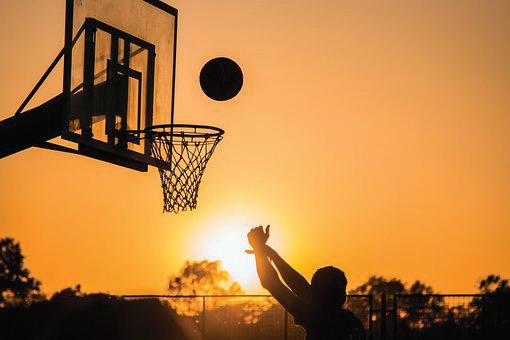
according to Rule 5.
11. The referee shall be judge of the ball and shall decide when the ball is in play, in bounds, to which side it belongs, and shall keep the time. He shall decide when a goal has been made, and keep account of the goals with any other duties that are usually performed by a referee.
12. The time shall be two 15-minute halves, with five minutes’ rest between.
13. The side making the most goals in that time shall be declared the winner. In case of a draw, the game may, by agreement of the captains, be continued until another goal is made.
Basketball was an immediate hit. A few weeks after the game was born, students taught their own YMCAs the rules. Shortly after that, the rules were printed in the College Magazine and the magazine was mailed to YMCAs around the country.
Because of the College Magazine’s credibility, the game spread quickly on both a national and worldwide level. By 1905, basketball took its spot as an
The skies above Anchorage are quite busy. In fact, the city is home to the world’s third busiest air cargo hub: Ted Stevens Anchorage International Airport.
The airport is roughly equidistant from Tokyo and New York and claims to be within 9.5 hours of 90% of the industrialized world. The barrage of planes landing and taking off testify to the centrality of the hub. The following photos show some of the planes that made Anchorage a temporary home to load, unload or refuel.
From top to bottom: Korean Air Cargo Boeing 777. Ravn Alaska De Havilland Canada Dash with service from Unalakleet landing.
UPS Boeing 747 prepares to enter the runway and make its way to Southern California.
See more online!

official permanent winter sport.
Ever since its creation in 1892, basketball has continued to flourish. When the National Basketball Association was founded in 1946, the sport gained even more publicity. Nowadays, according to thesporting.blog, basketball is the second most popular sport in the United States.
According to the website, “while American football is considered the most-watched sport, basketball is widely considered the most-played sport in the US.” Additionally, “it is considered the 10th most-followed sport in the world.”
Each year, hundreds of thousands of people flood into NBA arenas and crowd around their televisions to watch their favorite teams and players compete. What started as a way to kill time has evolved into a worldwide sensation.
The legacy Naismith created in 1892 when he nailed two peach baskets to a wall has outlived him, and it will continue to thrive for generations and generations of competitions.
